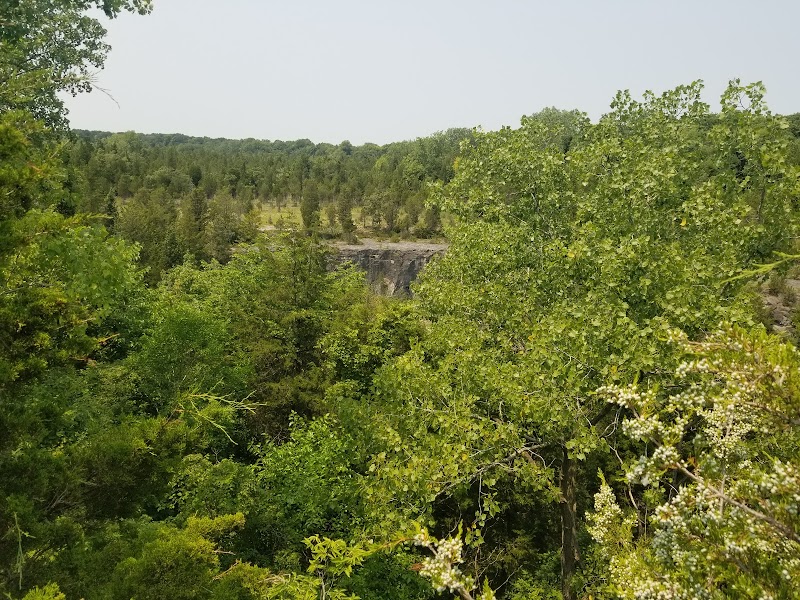
Exploring Troy Nature Society Bird Walks: A Practical Guide to Birding Adventures in Troy, Michigan
Troy Nature Society Bird Walks offer an accessible yet enriching way to engage with Michigan's vibrant birdlife. With gentle trails, expert guides, and vivid natural encounters, these walks invite both casual visitors and seasoned birders to experience the thrill of discovery just outside downtown Troy.
Start Early
Bird activity peaks during early morning hours, so aim to join walks at sunrise to catch the most species and the freshest sounds.
Wear Grip-Ready Footwear
The trails include dirt, gravel, and occasional muddy patches; sturdy shoes with good traction will keep you comfortable throughout the walk.
Bring a Water Bottle
Hydration is key, especially during warmer months or longer walks; a reusable water bottle will keep you refreshed without harming the environment.
Use Binoculars or Field Guides
Enhance your birdwatching by bringing binoculars or a local bird guidebook; it helps identify species more easily and deepens engagement.
Exploring Troy Nature Society Bird Walks: A Practical Guide to Birding Adventures in Troy, Michigan
Among Michigan's suburban green spaces, the Troy Nature Society Bird Walks offer a lively encounter with local avian life without overwhelming the casual outdoor enthusiast. These guided walks, set primarily in Troy’s scenic nature preserves and parks, stretch roughly 2-3 miles over mostly flat terrain with well-maintained dirt and gravel paths. The elevation gain is minimal—generally under 100 feet—making the walks accessible yet engaging for a broad range of hikers.
The experience begins with the rustle of leaves and the chirping chorus of songbirds—cardinals, chickadees, and woodpeckers darting through the tree canopy that dares you to keep pace. The paths invite you to lean into each sound and sudden wingbeat, transforming the familiar park landscape into a theater of movement and color. Expect gentle, forested trails lined with oak and maple, patches of marshy wetland where marsh wrens and herons silently observe, and open fields where hawks glide in deliberate circles.
The walk’s measured pace balances adventure with learning. Guides share practical tips for bird identification—notes on calls, silhouettes, even timing to catch migratory visitors. Whether you carry binoculars or a novice’s keen eye, these outings make birdwatching accessible. They reward patience and sharpen perception.
Prepare practically: sturdy walking shoes handle uneven patches and occasional muddy spots. Bring water—especially in warmer months—and a hat for shaded breaks. Early morning beginnings maximize bird activity but avoid the heat of midday summer.
Each step on this trail is an exercise in attunement. The environment challenges you to move not just forward, but deeper into attention. When a sudden flicker stirs the branches, or the creek nearby pushes along fallen leaves, that’s nature engaging on its terms—not conquered, but shared.
This is not a hard trek but a commitment to presence where river currents quicken, where silent wings trace arcs overhead, and where the ordinary becomes something fiercely itself. Troy Nature Society Bird Walks suit anyone eager to combine light exercise with real-world learning. The simple joy of spotting a red-tailed hawk against a bright Michigan sky—or identifying a lesser-known warbler—makes the effort worthwhile.
Bring curiosity, comfortable gear, and respect for the walk’s fragile ecosystem. The reward is a morning spent in quiet motion, eyes wide to life that thrives just beyond the suburban edge.
Nearby Trips
All Adventures
Boat Charters
Water Activities
Adventures near Troy, Michigan
Discover the unique and memorable adventures that make Troy, Michigan special.
Frequently Asked Questions
Are the bird walks suitable for children or beginners?
Yes, the Troy Nature Society Bird Walks are designed to be accessible, with gentle trails and knowledgeable guides who engage all ages and skill levels. Kids can learn through visual and auditory cues without requiring specialized gear.
Do I need to bring my own binoculars or can they be borrowed?
While bringing your own binoculars enhances the experience, many walks provide limited loaner equipment on a first-come, first-served basis. It’s best to call ahead to check availability.
What wildlife besides birds might I encounter on the walks?
Visitors often spot white-tailed deer, red foxes, and a variety of small mammals and amphibians. The nearby streams and wetlands also invite butterflies, dragonflies, and frogs.
Are pets allowed during these bird walks?
Generally, pets are discouraged to prevent disturbing wildlife. Some walks explicitly prohibit animals, so check specific walk details before bringing a pet.
How can I learn more about local bird species seen on the walks?
The guides frequently share identification tips and info about bird behavior. Additionally, resources like the Michigan Audubon Society’s website and local birding apps can deepen your knowledge.
What’s the best time of year to see migratory birds during these walks?
Spring (April to June) and fall (September to October) are peak migration periods. During these months, the diversity and frequency of species increase notably.
Recommended Gear
Sturdy Hiking Shoes
Protects feet and provides reliable grip across dirt and gravel paths, especially through occasional muddy sections.
Binoculars
Enhances your ability to identify and observe distant birds without disturbance.
Reusable Water Bottle
Keeps you hydrated during warmer months when heat and humidity increase demand.
Weather-Appropriate Layered Clothing
Adapts to temperature fluctuations and wind during cooler seasons.
Local Insights
Hidden Gems
- "A small overlook near the Woods Creek Trail offers clear views of nesting hawks rarely seen by casual visitors."
- "The wetland boardwalk at Perdoni Nature Area reveals secretive water bird activities not visible from main paths."
Wildlife
- "Eastern Bluebirds"
- "Great Horned Owls"
- "Painted Turtles"
- "Green Herons"
History
"The Troy Nature Society formed in the late 20th century as part of local conservation efforts aimed at preserving native habitats amid suburban expansion, offering community-driven public access and educational programming."
